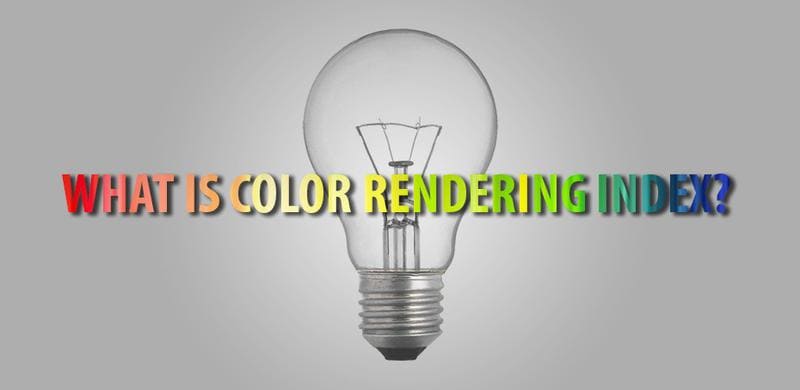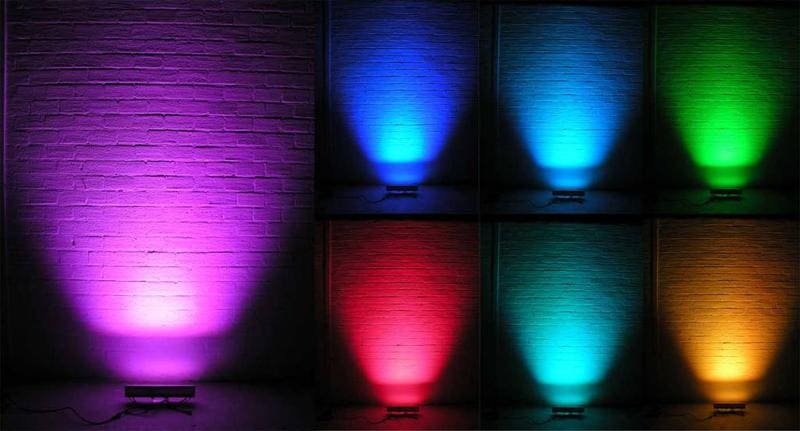Light. We can’t live without it. Indoors or outdoors, it’s the silent hero of our day-to-day existence. Imagine trying to read your favorite book, cook up a storm in the kitchen, or navigate through your garden after sunset—all in the dark. Not ideal, right? That’s why light is such a big deal, both when the sun’s up and when it’s nowhere to be seen. Whether you’re illuminating your living room or decking out your driveway, lighting is key to everything. It’s the unsung MVP of modern life, making sure we don’t trip, fumble, or squint.
But hold up, not all lights are created equal. That’s where Lumen E wattage come in. These two terms may sound like tech jargon from a sci-fi movie, but understanding them will save you from dimly lit disasters or energy-guzzling bulb choices. Lumens measure how bright a light is, while wattage tells you how much energy that bad boy is chugging down. You wouldn’t pick a sports car without knowing its horsepower, right? Same goes for your lights. You need to know their power.
Let’s dive into the glowing world of lumens and wattage and decode why getting the balance right will make your lighting game top-notch. Whether you’re upgrading your home or plotting the perfect ambiance for your backyard soirée, this is the kind of knowledge that lets you make smart choices. It’s time to make sure your lights are working as hard as you do, without burning through your electricity bill!
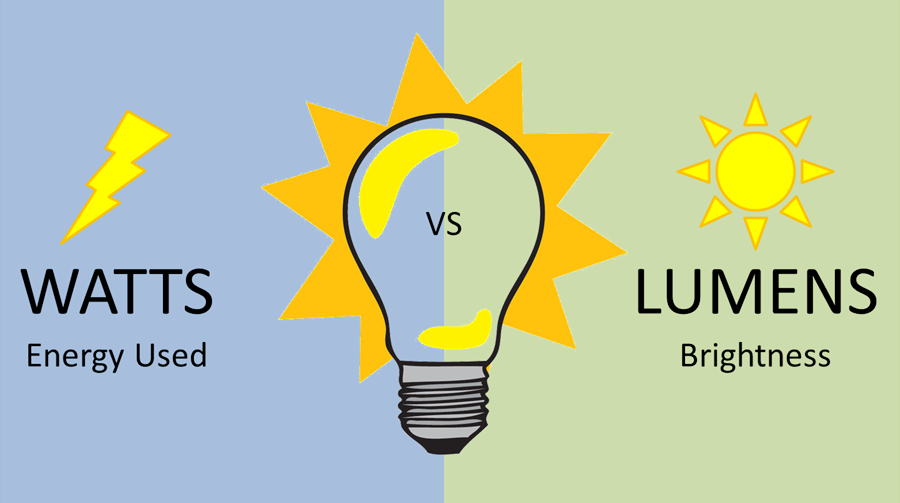
Definition of Lumens and Wattage
1. Lumens: The Brightness Meter
Ever wonder why some bulbs make your room look like a cave, while others turn it into a mini-sun? That’s Lumen doing their thing. Lumens are the magic number that tells you just how much light is coming out of your bulb. It’s not about how big or fancy the bulb looks, it’s about how many lumens it’s throwing out into the world. Picture it like this: the higher the lumens, the brighter your space. If you’re aiming for daylight vibes inside, you need those lumens cranked up. Whether you want a subtle glow or enough brightness to make your neighbor’s cat squint, lumens are the key.
2. Wattage: The Energy Guzzler
While lumens are all about the glow, wattage is the not-so-glamorous cousin measuring how much energy your bulb is wolfing down. Higher wattage means more energy is getting gobbled up, and let’s be real, no one wants an electricity bill that looks like it was signed by a Hollywood star. Wattage used to be the go-to measure for brightness—back in the ancient days of incandescent bulbs—but in today’s energy-savvy world, it’s mostly about how much power your light is consuming. Think of wattage as the speedometer on your bulb’s energy appetite.
3. Why Lumens Rule the Roost for Brightness
Forget wattage. That’s old school. The real MVP for brightness is Lumen. Back in the day, people used wattage as a brightness measure because most bulbs chugged energy like marathon runners at mile 26. But technology has evolved, and wattage no longer dictates brightness. You could have a low-wattage LED that shines brighter than a high-wattage incandescent. So, if you want to light up your room like a Broadway stage or just want enough glow to avoid tripping over your dog, focus on lumens. It’s your brightness compass.
4. Wattage: Why It’s Still Important for Energy Efficiency
Now, wattage might not be the star of the show anymore, but it still has a pretty crucial supporting role. Energy efficiency is the name of the game. Sure, you want a bright light, but do you also want to keep your utility bill in check? That’s where wattage steps in. The lower the wattage, the less energy you’re burning. With today’s LED superstars, you can get a ton of lumens for a fraction of the wattage. It’s like getting a five-star meal for fast food prices—lots of bangs, very little buck.
Importance of Understanding the Relationship Between Lumens and Wattage
1. The Great Shift: Wattage vs. Lumens in the Age of Energy Efficiency
Once upon a time, wattage was the king of brightness. You’d stroll into the store and pick a 60-watt bulb for your living room, a 40-watt for the bedroom, and maybe a 100-watt if you wanted your place to resemble a football stadium. But then, technology flipped the script. Welcome to the era of Lumen, where brightness isn’t about how much energy your bulb guzzles, but how much light it gives off. Thanks to modern energy-efficient lighting (hello, LEDs), you can now get the brightness of a 100-watt bulb with a fraction of the power. Wattage? Pfft. That’s just how hard the bulb is working, not how much light it’s throwing out. The future is all about lumens, baby.

2. Lumens per Watt: The Brightness Efficiency Equation
Now, let’s talk about lumens per watt—the holy grail of lighting efficiency. Think of it like your car’s miles per gallon. The more miles you get per gallon, the more efficient your car is. Same goes for lights. The more lumens you squeeze out of each watt, the more efficient your bulb. It’s a brilliant little ratio that tells you how much light you’re getting for every bit of energy spent. A high lm/W means you’re basking in glorious brightness without your bulb sweating out electricity like it’s running a marathon. It’s the magic formula that makes your home bright, your wallet happy, and the planet a little cooler.
So, the next time you’re shopping for bulbs, don’t be fooled by those ancient wattage numbers. Aim for high lumens, low watts, and watch your space glow while your energy bill stays as chill as you are.
Comparison of Lumens and Wattage in Light Bulbs
1. Traditional Incandescent Bulbs: The Energy Gobblers
Ah, incandescent bulbs—the granddaddies of lighting. They’ve been around forever, glowing like tiny, inefficient suns in our homes. These guys crank out light, sure, but at what cost? Lower lumens per watt means they burn more energy than they brighten. It’s like trying to get fit by eating doughnuts—lots of effort, little reward. Incandescents turn most of that energy into heat instead of light, which is why they’re practically tiny space heaters. Sure, your room might be glowing, but your energy bill? It’s crying in the corner. Let’s just say, that when it comes to efficiency, these bulbs are the marathon runners that stop for donuts every mile.
2. LED Bulbs: The Bright Overachievers
Enter the LED bulbs—the heroes we didn’t know we needed but now can’t live without. These little geniuses boast higher lumens per watt, which is just a fancy way of saying they know how to turn energy into light with surgical precision. LED bulbs are like that friend who’s not only incredibly smart but also runs marathons and eats kale. They use way less energy, shine way brighter, and stick around longer than your typical incandescent. In fact, they’re so energy-efficient you’ll forget where you bought them because they last for what feels like eons. No more hot bulbs burning your fingers or sudden light-bulb funerals. With LED, you’re looking at a lifetime of bright, cool, and efficient lighting.
Let’s be honest—LEDs are the overachievers of the lighting world, doing everything better and making it look easy. So, if you’re ready to leave behind the energy-sucking relics of the past, it’s time to let LED take the spotlight. Quite literally.
Factors That Affect Lumens
1. Type of Bulb: The Battle of the Bulbs
Choosing the right bulb is like picking a side in an epic lighting showdown: LED vs. Incandescent vs. Fluorescent. Each bulb has its own way of playing the lighting game, and they don’t all shine equally. LED? They’re the bright-eyed, energy-efficient overachievers. Incandescents? Oh, they’re like the vintage vinyl—good memories, but not the most practical. Fluorescents fall somewhere in the middle, like that dependable cousin who shows up to family gatherings but never steals the spotlight. The type of bulb you choose directly impacts your lumens, so pick wisely or prepare for some dim disappointments.
2. Age of Bulb: Lights Get Old Too
Just like your favorite pair of jeans, bulbs wear out. As they age, they start to lose their shine, and before you know it, your once-brilliant room is casting shadows like a bad noir film. It doesn’t matter if it’s an incandescent, LED, or fluorescent—time will dim them all. Keep an eye on that flicker of youth, because lumen output decreases the older your bulbs get. When the glow goes, so should the bulb.
3. Temperature: The Heat is Not On
Got heat? Well, say goodbye to bright lights. High temperatures don’t play nice with lumens. If your bulb is sweating, it’s also struggling to keep up its light game. Think of it like trying to run a marathon in a fur coat—you’ll still move, but not as fast. High heat can mess with both light output and your bulb’s lifespan, making it flicker out faster than a one-hit wonder.
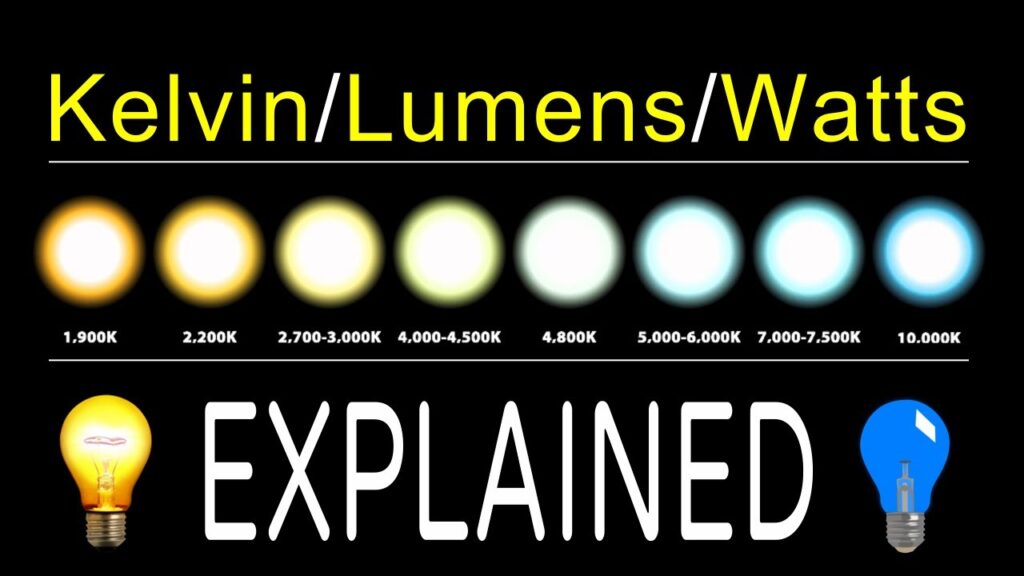
4. Color Temperature: Cool Kids Shine Brighter
Not all light is created equal, and the temperatura di colore of your bulb can make or break the room’s mood. Want warm, cozy vibes? You’ll need a lower color temperature, like 3000K. But if you want to go full lumen power, aim for the cooler side of the spectrum, like 6500K. Cooler colors bring the brightness, like that one friend who always shows up overdressed to casual events. If you’re going for maximum illumination, cooler is better.
5. Height of Installation: The Tall and Short of It
Where you hang your light makes all the difference. Higher installations spread light over a larger area, but they can also water down the brightness. It’s like trying to hit a target with a sprinkler—it’ll reach, but it won’t be concentrated. The height of installation dictates how intense the light feels at ground level, so if you’re aiming for a spotlight effect, keep it closer to the action.
6. LED Drivers: The Power Behind the Throne
An LED driver is like the unsung hero behind the scenes. It’s the one making sure your light doesn’t quit halfway through the show. It controls the output current and voltage, ensuring that your LED is running at peak performance without throwing a tantrum (or burning out). Without the right driver, even the best LED will fizzle out faster than your post-New Year’s resolutions. It’s all about power control, baby.
7. Lens and Fixture Design: Style Meets Function
Lighting isn’t just about what’s inside the bulb—it’s about how it’s presented. Enter the lens and fixture design. These two can either amplify your light or hide it behind layers of frosted glass and bad angles. A well-designed fixture will make your room glow like a supermodel on a red carpet, while a poorly designed one will keep all that glorious light trapped, as if it’s been grounded. Design matters, so make sure your light gets to shine without restrictions.
8. Fixture Size and Style: Go Big (or Small) but Keep it Balanced
It’s all about proportion, people! When choosing soffit lights, you want fixtures that complement—not overwhelm—your home’s design. Too small, and they’ll look like an afterthought; too big, and they’ll dominate your exterior in a way that’s more “tacky” than “tasteful.” Aim for fixtures that blend harmoniously with your home’s architecture. And don’t be afraid to get stylish! Whether you’re into sleek, modern designs or vintage lantern vibes, there’s a soffit light for everyone. Just make sure it’s the right size and style to keep everything looking sharp and well-balanced.
8. Dirt and Dust Accumulation: The Silent Dimmers
Dust may be quiet, but it’s a lumen thief. Over time, dust and grime build up on your bulbs and fixtures, silently dimming your brilliance. It’s like wearing sunglasses indoors—sure, you’re still cool, but no one can really see your potential. A dirty bulb is a dim bulb, so if you’re serious about keeping your space lit, grab that duster and set your light free. Your lumens will thank you.
How to Improve Lumens
1. Choosing the Right Bulb: The LED Revolution
When it comes to maximizing lumens, not all bulbs are created equal. Enter the LED bulb, the crown jewel of lighting efficiency. LEDs are like the supercharged athletes of the bulb world—while old-school incandescent bulbs are puffing along, barely keeping up, LEDs are sprinting ahead, delivering higher lumen output without breaking a sweat. They use less energy, last longer, and light up your life like a firework show on New Year’s Eve. If you want to brighten things up without causing an energy crisis, LED are your go-to.
2. Replacing Old Bulbs: Fresh is Best
Ah, the aging bulb—once a radiant beacon, now a flickering reminder that nothing lasts forever. Over time, bulbs dim, and their once-blazing glory fades like yesterday’s headlines. Replacing old bulbs is the easiest trick in the book to keep your space shining bright. Don’t wait for the light to die a slow, tragic death. Swap it out before it starts sulking in the corner like a washed-up celebrity, and watch your lumens bounce back like they’re ready for a comeback tour.
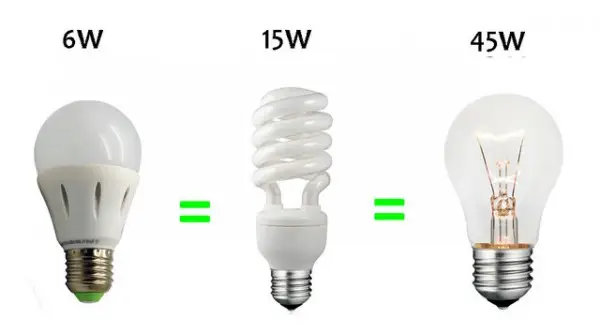
3. Maintaining Optimal Temperature: Keep it Cool, Keep it Bright
Heat and light don’t always play nice together. In fact, overheating is a sure way to watch your lumens pack their bags and disappear. Bulbs, especially those energy-efficient LEDs, thrive in cooler environments. Too much heat? You’re looking at reduced brightness and a shorter lifespan. It’s like trying to run a marathon in a sauna—you’ll eventually burn out. Keep your bulbs cool, and they’ll shine brighter for longer, without throwing any temper tantrums.
4. Correct Installation Height: Don’t Let Your Lumens Wander
Installing a light too high is like yelling across a crowded room—you’ll be heard, but not clearly. Installation height matters when it comes to getting the most out of your lumens. Too high, and the light scatters like gossip at a dinner party. Too low, and it’s all concentrated in one spot, making the rest of the room feel like it’s being left out of the fun. Aim for the sweet spot—high enough to spread the light evenly, but low enough to keep everything illuminated.
5. Controlling Ambient Temperature: The Climate Control Factor
Your lumens are sensitive creatures. Ambient temperature plays a big role in how they perform. Too hot, and they’ll start slacking. Too cold, and they’ll sulk. It’s like trying to work in a room where the thermostat is set to extremes—you won’t get much done. Keep your lighting environment comfortable, and your lumens will shine on, doing their best work without feeling the heat—or the chill.
6. Cleaning Fixtures Regularly: Wipe Away the Darkness
Dust and dirt are sneaky lumen thieves. Over time, they’ll build up on your bulbs and fixtures, blocking precious light from reaching its full potential. It’s like putting sunglasses on your bulbs—cool, but not very bright. Cleaning your fixtures regularly is an easy way to ensure your lights are shining as brilliantly as possible. A quick wipe-down every now and then, and your lumens will be back at full power, illuminating your space with fresh, dust-free enthusiasm.
7. Using Reflectors or Diffusers: Focus Your Light
Why waste lumens when you can direct them exactly where you need them? Reflectors and diffusers are like personal trainers for your light—helping focus and spread the illumination efficiently. Reflectors bounce light back into the room, amplifying its impact. Diffusers soften the glow, creating an even, well-distributed light. Both options improve the effectiveness of lumens without asking your bulb to work any harder. It’s like getting more out of your light without even breaking a sweat.
Conclusione
The Lumens and Wattage Tango
As the curtain falls on our illuminating journey, let’s recap the dynamic duo: lumens and wattage. Lumens are the shining stars, measuring how much light your bulb emits, while wattage tells you how much energy that glow requires. It’s a delicate dance, where understanding the relationship between these two can mean the difference between a dazzlingly bright home and a dimly lit dungeon. Forgetting one for the other? That’s like trying to bake a cake without knowing if it’s chocolate or vanilla—messy and disappointing!
Factors That Flicker
When it comes to achieving optimal lighting, consider the myriad factors that affect lumens. Type of bulb? Check. Age? You bet. Temperature, installation height, and even the cleanliness of your fixtures play pivotal roles in how your lights perform. Each of these elements can either enhance or diminish the brilliance of your lumens, transforming your space from drab to fab or vice versa. Ignoring these factors is like throwing a party and forgetting to invite the guests—you’ll end up with a whole lot of empty space.
Tips for a Brighter Tomorrow
Want to boost your lumen output and bask in the glow of efficient lighting? Start by choosing the right bulbs, like those glorious LEDs that are ready to rock your world. Replace old bulbs that have seen better days—because no one wants to be the host with flickering lights. Keep your lighting environment cool and cozy, and don’t skimp on cleaning those fixtures; dust is the enemy of brightness.
Consider installation height and add reflectors or diffusers to guide your lumens where they’re needed most. With these tips in your pocket, you’ll ensure that your space shines like a supernova, all while keeping your energy bills in check. Illuminate your life with savvy decisions, and let your lights do the talking!
